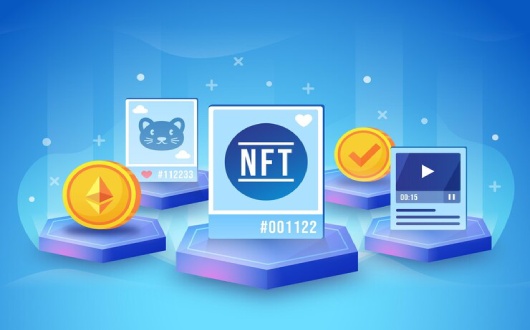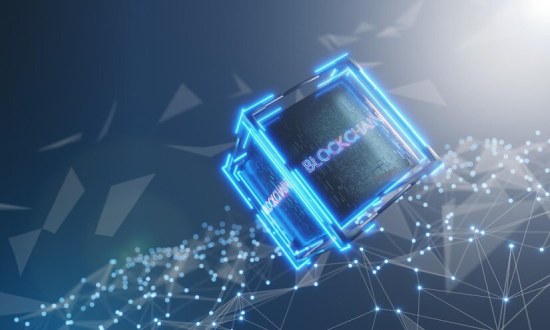-
In the rapidly evolving world of blockchain and digital assets, NFT marketplace development has taken center stage, revolutionizing the way digital art, collectibles, and other unique assets are created, bought, and sold. With its high throughput, low transaction fees, and cutting-edge technology, the Solana blockchain development has emerged as a popular service for developing NFT marketplaces. This comprehensive guide dives deep into the technical aspects, architecture, and development process of building a Solana-based NFT marketplace. It is designed to serve as a professional resource for developers, entrepreneurs, and blockchain enthusiasts, ensuring that the latest information and best practices are incorporated.
Getting Started
NFTs have redefined digital ownership by allowing creators to tokenize art, music, virtual real estate, and other unique assets. As the NFT market expands, the demand for efficient, scalable, and user-friendly NFT marketplaces is surging. Solana, with its high performance and cost-effective transactions, offers a compelling alternative to traditional blockchain platforms like Ethereum, where high gas fees and network congestion are common issues.
This guide provides an in-depth look at how to build a robust Solana-based NFT marketplace from scratch. It covers everything from the architectural design and technical stack to the security measures and future trends, ensuring that even readers with intermediate blockchain knowledge can gain valuable insights and practical guidance.
Why Solana for NFT Marketplace Development?
Solana stands out as a high-performance blockchain that supports thousands of transactions per second (TPS) and offers minimal transaction fees. Here are some key reasons why Solana is ideal for NFT marketplace development:
- High Throughput: Solana's architecture is designed to handle high transaction volumes, which is critical for marketplaces that expect a significant number of transactions during peak times.
- Low Fees: The cost of executing transactions on Solana is significantly lower compared to other blockchains. This is crucial for NFT marketplaces where high transaction costs can deter users.
- Scalability: Solana's unique Proof of History (PoH) mechanism enables it to scale efficiently, making it well-suited for a rapidly growing NFT ecosystem.
- Robust Developer Ecosystem: With tools like the Solana CLI, SDKs, and the Anchor framework, developers have access to powerful resources that simplify the development process.
- Growing Community and Ecosystem: Solana has rapidly built a vibrant community, with numerous projects and integrations that enhance its overall ecosystem.
These benefits have made Solana an attractive platform for NFT projects, as it provides a seamless experience for both developers and end-users.
Also, Read | Building a Solana NFT Rarity Ranking Tool
Understanding NFTs on Solana
NFTs are unique digital tokens that represent ownership of specific assets. On Solana, NFTs are created and managed using smart contracts, similar to other blockchain platforms but optimized for Solana's infrastructure.
NFT Standards on Solana
While Ethereum uses the ERC-721 and ERC-1155 standards for NFTs, Solana has its own set of standards and protocols for creating and managing NFTs. Some notable standards and protocols include:
- Metaplex Standard: Metaplex is an open-source protocol on Solana that simplifies the creation and management of NFTs. It provides a set of standards and tools for minting, selling, and auctioning NFTs.
- Token Metadata Program: This program standardizes the way NFT metadata is stored and accessed on Solana, ensuring consistency and interoperability between NFT projects.
These standards facilitate the interoperability and ease-of-use required for a robust NFT ecosystem on Solana.
Marketplace Architecture Overview
Building a Solana-based NFT marketplace requires careful planning and a well-structured architecture that ensures security, scalability, and user-friendliness. A typical marketplace architecture can be divided into three main components: front-end, back-end, and smart contracts.
Front-End Components
The front-end of the marketplace is the user interface that interacts with the blockchain via APIs and smart contracts. Key considerations include:
- User Experience (UX) and Design: A clean, intuitive design that simplifies navigation and enhances the overall user experience.
- Wallet Integration: Integration with popular Solana wallets such as Phantom, Solflare, or Sollet to facilitate user transactions.
- Responsive Design: Ensuring that the marketplace is accessible on various devices, including desktops, tablets, and mobile phones.
- Real-Time Data Display: Displaying live updates of NFT listings, prices, and transactions through efficient data fetching mechanisms.
Back-End Components
The back-end handles business logic, data storage, and interactions with the blockchain. Key components include:
- APIs and Middleware: RESTful or GraphQL APIs that serve as the bridge between the front-end and the blockchain.
- Database Management: A robust database (SQL or NoSQL) to store off-chain data such as user profiles, transaction histories, and metadata references.
- Authentication and Authorization: Secure mechanisms to verify user identities and manage permissions, ensuring that only authorized actions are performed.
- Data Caching and Processing: Efficient caching strategies to handle high-frequency data requests and ensure fast load times.
Smart Contracts and On-Chain Logic
Smart contracts on Solana are responsible for the core functionalities of the NFT marketplace. They include:
- Minting Contracts: To create new NFTs and assign metadata.
- Listing Contracts: To handle the listing, bidding, and sale processes.
- Auction and Trading Contracts: For conducting auctions, facilitating trades, and managing bids.
- Royalty Distribution: Mechanisms for distributing royalties to original creators upon secondary sales.
Developing these contracts requires a deep understanding of Solana's programming environment and adherence to best practices for security and performance.
Also, Check | Building a Cross-Chain NFT Bridge using Solana Wormhole
Development Tools and Frameworks
Developing on Solana involves several tools and frameworks that streamline the process, from coding to deployment. This section covers the key resources required for Solana NFT marketplace development.
Programming Languages
- Rust: The primary language for writing smart contracts on Solana. Rust offers strong performance and memory safety, which is crucial for blockchain applications.
- C and C++: Occasionally used for lower-level interactions, though Rust remains the preferred choice.
- JavaScript/TypeScript: Often used for front-end development and for interfacing with Solana's web3.js libraries.
Solana CLI and SDKs
The Solana Command Line Interface (CLI) is an essential tool for developers working on the Solana blockchain. It enables developers to:
- Create and manage Solana accounts.
- Deploy and interact with smart contracts.
- Query the blockchain for real-time data.
Additionally, SDKs like @solana/web3.js allow developers to interact with the blockchain from JavaScript, making it easier to integrate blockchain functionalities into web applications.
Anchor Framework
Anchor is a framework for Solana smart contract development that simplifies many of the complexities of building on Solana. Key benefits of using Anchor include:
- Declarative Syntax: Simplifies the process of writing, testing, and deploying smart contracts.
- Built-In Error Handling: Provides robust error handling mechanisms to reduce the risk of runtime failures.
- Integrated Testing: Supports writing unit and integration tests for smart contracts, ensuring reliability and security.
- Community Support: A growing ecosystem of tools, libraries, and community resources that facilitate rapid development.
Anchor abstracts many of the lower-level details, allowing developers to focus on business logic and functionality rather than the intricacies of Solana's architecture.
Also, Discover | How to Create an NFT Rental Marketplace using ERC 4907
Building the Smart Contracts
Smart contracts are the backbone of any NFT marketplace. In this section, we will detail the process of setting up a development environment, writing, deploying, and testing smart contracts on Solana.
Setting Up the Development Environment
Install the Solana CLI:
Follow the official documentation to install the Solana CLI on your system.
bash Copy sh -c "$(curl -sSfL https://release.solana.com/v1.10.32/install)"Install Rust:
Rust is required to compile Solana programs. Install it using rustup:
bash Copy curl --proto '=https' --tlsv1.2 -sSf https://sh.rustup.rs | shSet Up Anchor:
Anchor provides a streamlined framework for Solana development. Install Anchor CLI with:
bash Copy cargo install --git https://github.com/project-serum/anchor anchor-cli --lockedCreate a New Project:
Use Anchor to initialize a new project:
bash Copy anchor init solana-nft-marketplaceWriting and Deploying Smart Contracts
When developing smart contracts for NFT functionality, focus on the following components:
- Minting Logic: Define how NFTs are created, ensuring that each token has unique attributes and metadata.
- Marketplace Functions: Include methods for listing NFTs, placing bids, and finalizing sales.
- Access Control: Implement role-based permissions to secure functions and prevent unauthorized access.
- Event Emission: Emit events for off-chain listeners, which can update the marketplace interface in real time.
Here is a simplified example of a smart contract snippet using Anchor:
rust Copy use anchor_lang::prelude::*; use anchor_spl::token::{self, Mint, TokenAccount, Transfer}; declare_id!("YourProgramIDHere"); #[program] pub mod solana_nft_marketplace { use super::*; pub fn mint_nft(ctx: Context<MintNFT>, metadata: String) -> Result<()> { // NFT minting logic // Save metadata, assign token to user, etc. Ok(()) } pub fn list_nft(ctx: Context<ListNFT>, price: u64) -> Result<()> { // Listing logic for marketplace Ok(()) } } #[derive(Accounts)] pub struct MintNFT<'info> { #[account(mut)] pub mint: Account<'info, Mint>, #[account(mut)] pub user_token_account: Account<'info, TokenAccount>, pub user: Signer<'info>, pub token_program: Program<'info, token::Token>, }After writing your contracts, deploy them using the Anchor CLI:
bash Copy anchor build anchor deployTesting and Debugging
Robust testing is critical. Anchor supports writing tests in JavaScript or TypeScript, using Mocha as a test framework. A sample test might look like this:
javascript Copy const anchor = require('@project-serum/anchor'); const { SystemProgram } = anchor.web3; describe('solana-nft-marketplace', () => { const provider = anchor.Provider.env(); anchor.setProvider(provider); const program = anchor.workspace.SolanaNftMarketplace; it('Mints an NFT', async () => { // Test minting logic here const tx = await program.rpc.mintNft("metadata-link", { accounts: { // Set up accounts and parameters }, }); console.log("Transaction signature", tx); }); });Thorough testing ensures that your smart contracts are robust, secure, and perform as expected under different scenarios.
Integrating Off-Chain Services
A comprehensive NFT marketplace not only depends on on-chain functionality but also on off-chain services that enhance the user experience and ensure data availability.
Interfacing with IPFS and Arweave
IPFS (InterPlanetary File System):
IPFS is a decentralized storage network ideal for hosting NFT metadata and digital assets such as images or videos. When an NFT is minted, its metadata (e.g., title, description, and asset URL) is typically stored on IPFS to ensure decentralized and tamper-proof storage.
Arweave:
An alternative to IPFS, Arweave offers permanent data storage, ensuring that NFT assets remain accessible indefinitely. Integrating Arweave can provide additional data persistence guarantees.
Both services can be integrated using APIs. For instance, once an NFT is minted, upload the asset to IPFS or Arweave and then store the resulting URL within the NFT's metadata.
User Authentication and Wallet Integration
A seamless user experience in an NFT marketplace hinges on secure authentication and wallet integration. Key components include:
- Wallet Integration:
Integrate popular Solana wallets (e.g., Phantom, Solflare) using libraries such as@solana/wallet-adapter. This enables users to sign transactions securely. - Authentication Mechanisms:
Although blockchain transactions are signed by users, a traditional authentication layer (using OAuth or JWT tokens) may be required for additional functionalities like user profiles, order histories, or personalized dashboards. - Secure Storage of Credentials:
Ensure that any sensitive data is encrypted and that best practices for key management are followed.
You may also like | How to Implement an On-Chain NFT Allowlist
Security Best Practices
Security is paramount in blockchain applications, especially for NFT marketplaces that handle valuable assets. Here are some best practices:
Auditing Smart Contracts
- Third-Party Audits:
Engage with reputable security firms to audit your smart contracts. An audit will help identify vulnerabilities, logic errors, or potential exploits. - Automated Testing:
Utilize automated tools and continuous integration pipelines to run security tests and monitor code quality. - Formal Verification:
Where possible, use formal verification techniques to mathematically prove that your contract behaves as expected.
Handling Private Keys and Wallet Security
- Key Management:
Never hard-code private keys in your codebase. Use secure vaults or environment variables to manage secrets. - Multi-Signature Wallets:
For administrative actions, consider using multi-signature wallets to add an extra layer of security. - User Education:
Educate your users about best practices for wallet security, including the importance of safeguarding their private keys and using hardware wallets when possible.
Scalability, Performance, and Cost Considerations
Solana's architecture provides high throughput and low fees, but marketplace developers must still consider:
- Transaction Throughput:
Although Solana can process thousands of TPS, your marketplace should implement off-chain caching and batching of transactions to optimize performance during high traffic. - Network Congestion:
Monitor network congestion and implement dynamic fee structures if necessary. Design your system to handle peak loads efficiently. - Cost Analysis:
Regularly review the cost of on-chain operations, including minting, listing, and trading. While Solana fees are low, optimizing smart contract logic can further reduce operational costs. - Decentralized Storage Costs:
Consider the costs associated with storing data on IPFS or Arweave. Balance permanence with affordability to ensure sustainable operations.
You may also like | A Guide to Implementing NFT Royalties on ERC-721 & ERC-1155
Challenges and Best Practices
Common Challenges
- Network Upgrades and Forks:
Blockchain networks, including Solana, periodically undergo upgrades. Staying informed about network changes and planning for potential forks is crucial. - Security Risks:
Smart contract vulnerabilities, phishing attacks, and wallet hacks pose risks. Regular audits and security best practices are non-negotiable. - User Adoption:
Ensuring a seamless user experience and educating users about wallet integrations and transaction processes can be challenging, especially for non-technical users. - Regulatory Compliance:
As NFT markets grow, so does regulatory scrutiny. Keeping up with legal requirements and ensuring compliance is an ongoing process.
Best Practices
- Modular Architecture:
Develop your marketplace with modular components to enable easier updates and maintenance. - Thorough Documentation:
Maintain comprehensive documentation for both your smart contracts and off-chain integrations. This facilitates easier onboarding of new developers and auditors. - Community Engagement:
Engage with the Solana and NFT communities to stay updated on best practices, emerging trends, and potential pitfalls. - Continuous Monitoring:
Implement robust monitoring solutions to track transaction performance, security incidents, and system health in real time.
You may also like | NFT ETFs | A Beginner's Guide to Investing in Digital Assets
Future Trends and Developments
The NFT and blockchain space is in constant flux, and keeping an eye on future trends is critical for any marketplace developer. Some emerging trends include:
- Interoperability:
Future NFT marketplaces may incorporate cross-chain interoperability, enabling assets to move seamlessly between different blockchains. - Enhanced User Experience:
Improved wallet integrations, decentralized identity solutions, and more intuitive UI/UX designs will drive broader adoption. - Secondary Market Innovations:
Mechanisms for automatic royalty distribution, fractional ownership, and secondary market trading are expected to evolve, adding layers of complexity and opportunity. - Decentralized Finance (DeFi) Integration:
NFT marketplaces could integrate with DeFi protocols to offer collateralized lending, staking, and liquidity mining using NFTs. - Green and Sustainable Blockchain Practices:
As environmental concerns grow, the shift toward energy-efficient blockchain protocols like Solana will continue to be a significant trend.
Staying abreast of these trends and continuously iterating on your marketplace platform will ensure long-term success in a competitive landscape.
Frequently Asked Questions (FAQ)
Q1: Why choose Solana over Ethereum for NFT marketplaces?
A: Solana offers higher throughput, lower transaction fees, and improved scalability compared to Ethereum. This makes it more suitable for high-volume applications like NFT marketplaces, where cost and performance are critical factors.
Q2: What programming languages are used in Solana development?
A: Rust is the primary language for writing Solana smart contracts due to its performance and safety features. Additionally, JavaScript/TypeScript is commonly used for front-end development and interacting with the blockchain via libraries such as
@solana/web3.js.Q3: What is the Anchor framework and why is it important?
A: Anchor is a development framework that simplifies writing, testing, and deploying smart contracts on Solana. It provides a declarative syntax, built-in error handling, and integrated testing features, thereby accelerating development and improving contract reliability.
Q4: How do I store NFT metadata securely?
A: NFT metadata is typically stored off-chain using decentralized storage solutions like IPFS or Arweave. These platforms ensure that metadata is tamper-proof and remains accessible over time.
Q5: How can I ensure the security of my smart contracts?
A: Security can be enhanced through thorough code reviews, third-party audits, automated testing, and formal verification. Additionally, following best practices for key management and wallet integration is crucial.
Q6: What are the main components of an NFT marketplace built on Solana?
A: The key components include the front-end (user interface and wallet integration), back-end (APIs, databases, and business logic), and smart contracts (handling minting, listings, trading, and royalties).
Q7: How do transaction fees on Solana compare to other blockchains?
A: Solana's transaction fees are significantly lower than those on Ethereum, making it an attractive platform for NFT marketplaces where frequent transactions occur.
Q8: What future trends should NFT marketplace developers be aware of?
A: Developers should keep an eye on cross-chain interoperability, enhanced user experiences through better wallet integrations, secondary market innovations like fractional ownership and automatic royalties, and increased integration with DeFi protocols.
Also, Check | DN-404 Token Standard : Revolutionizing Fractional NFT Ownership
Conclusion
Developing a Solana-based NFT marketplace presents an exciting opportunity to harness the power of blockchain for creating innovative digital asset ecosystems. With its high throughput, low transaction costs, and robust developer tools, Solana is ideally suited for building scalable and user-friendly NFT platforms.
Whether you are an experienced blockchain developer or new to the space, the information in this guide is designed to empower you to build a robust, secure, and innovative NFT marketplace on Solana. By following best practices, leveraging the right tools, and staying updated with emerging trends, you can create a platform that not only meets the demands of today's digital asset market but also paves the way for future growth and innovation.
For further queries, collaboration opportunities, or technical support, feel free to connect with our team of Solana blockchain developers. Your journey into the world of Solana-based NFT marketplaces starts here.

Our Offices
INDIA
Emaar Digital Greens, Sector 61,
Gurugram, Haryana
122011.
Welldone Tech Park,
Sector 48, Sohna road,
Gurugram, Haryana
122018.














